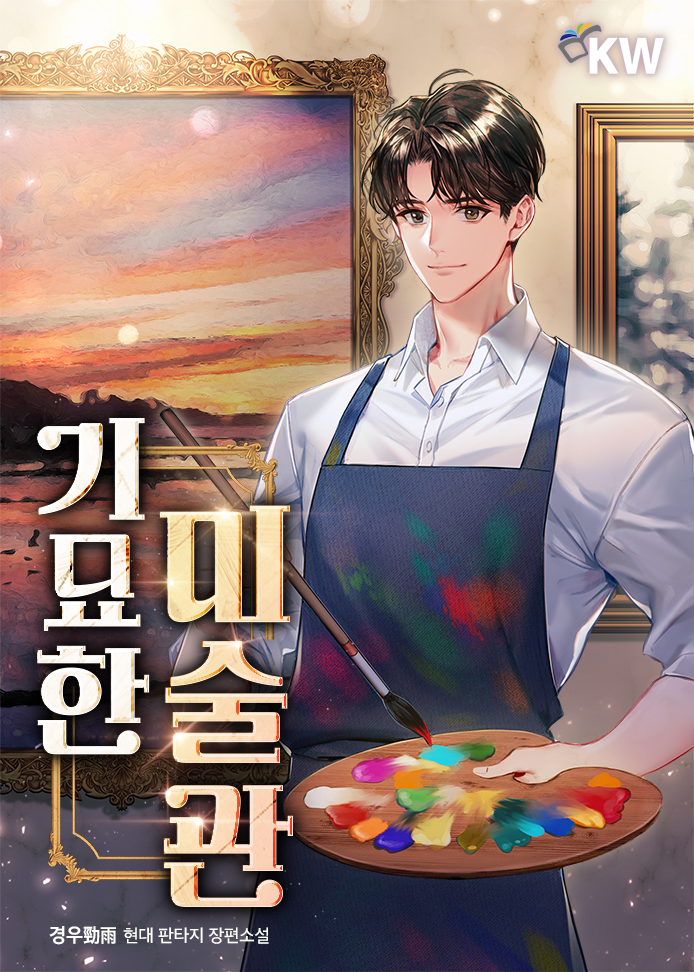Holding a Solo Exhibition (6)
I first discovered this bizarre art museum when I was twenty-six.
Now, I'm twenty-eight. It's been two years since I found it.
My life has undergone significant changes in the last two years.
Most of these changes have been positive.
I decided to trust this art gallery once again.
After thanking Jung-min noona and jumping out of the car, I ran straight to the art gallery.
The gallery, hidden in an alley off the main road.
I reached the gallery and looked towards the main road to find Jung-min noona's car, but she was already gone.
I bought a ticket to the still empty gallery, went downstairs, settled on a rock sofa to the sound of grand music, crossed my legs comfortably, and rested my chin on my hand.
A painting from my school days was being projected on the front wall.
'Marie Dihau Playing the Piano.'
When I first saw this painting, I thought it was by Vincent van Gogh. The delicate yet rough brushstrokes, the diagonal, curved, and straight lines of the applied paint.
But it was a painting by Toulouse-Lautrec.
The woman playing the piano in this painting was, surprisingly, the sister of the French painter and sculptor Edgar Degas. Degas, about thirty years older than Lautrec, once lived with Lautrec at his house in Montmartre during their time at the same studio. Lautrec painted a portrait of Marie Dihau, one of the three Dihau sisters, who were distant relatives of Degas.
Lautrec admired Degas, but it was a one-sided admiration.
Degas, who had a misanthropy, reportedly treated the physically disabled Lautrec with arrogance.
Of course, whether this was due to rivalry or genuine disdain, we cannot know.
Anyway, Lautrec greatly respected Degas, and in homage, he included a previous portrait of Marie by Degas in the background of this painting.
The lighting in the gallery gradually shifts to the right, and the painting changes.
It's the painting of the 'Bed' that I saw at first.
A painting of two women comfortably asleep.
I uncrossed my legs and closed my eyes.
From my experiences with exhibitions of Alphonse Mucha and Klimt, I know that in this gallery, certain paintings can pull me into a dream. And this painting is the same one that had led me into a dream last time.
I keep my eyes closed, but I feel dizzy. I try desperately to hold my head up and stay conscious, but eventually, I let my head drop without even realizing it.
Just like the two women in the painting, deeply asleep.
**
"Hey, have you heard? France and Russia are going to cooperate economically. I heard that it was finalized just yesterday, with the approval of Nicholas II, son of Alexander III of Russia."
"That's great! Paris will develop even more."
I felt my consciousness, which had been fading, returning as I listened to the voices of men chatting beside me.
'Paris.'
The hint from the men's conversation.
This is Paris. The Franco-Russian cooperation started in 1892.
Why would an art student know this? Because the Pont Alexandre III, built between 1896 and 1900 to commemorate this cooperation, is known as one of the most beautiful and intricate bridges over the Seine in Paris, something I learned about during my school days.
I slowly opened my eyes.
It's dusk, the twilight of the evening.
But unlike other European cities at this time, Paris is bustling with life, and the streets are packed with people eager to enjoy the night.
'Lautrec was born in 1864. So, he would be around twenty-eight.'
I wonder what Lautrec, my contemporary, looked like and what he thought about life?
I detached myself from the large oak barrel I was leaning against and surveyed my surroundings.
Lautrec is nowhere to be seen in my line of sight.
Despite the crowds, his unique feature as a dwarf makes him not immediately visible.
I decided against attracting attention, as it's not in my nature, and hid in an alleyway between buildings, observing passersby for many minutes. Eventually, I gave up on finding Lautrec here and turned my gaze to the shop signs.
Grain stores, butcher shops, places selling liquor and tobacco.
My eyes stopped at a sign painted with a lavish picture.
'Élysée Montmartre. A club where the young Lautrec often went.'
He even moved nearby because he liked it so much.
If this place is here, it means this is the Montmartre hill in Paris. Located in the 18th arrondissement of Northern Paris, this is the only highland area in Paris. 'Mont' means a small hill, and 'martre' means 'martyr', a place in Paris known especially for its artistic and nightlife scene.
I remember a senior from school who visited Paris during a holiday and was disappointed because Montmartre, which he had only seen in books, was now full of hawkers, and he couldn't enjoy it due to their soliciting.
'A club.'
I was curious.
What would a Parisian club from that era look like?
Read ahead by supporting me on Ko-fi. Access 5 advance chapters with the Doddle Dabbler Tier ($8) or 10 advance chapters with Artist Apprentice Tier ($15) or 20 advance chapters with Master Artisan Tier ($25) For every $15 collected on Ko-fi, I will release an extra chapter. Choose your tier by clicking the 'Support me' button! Rate and review this novel on NU to help people find this novel. Bonus chapters on reaching milestones. Happy reading!

